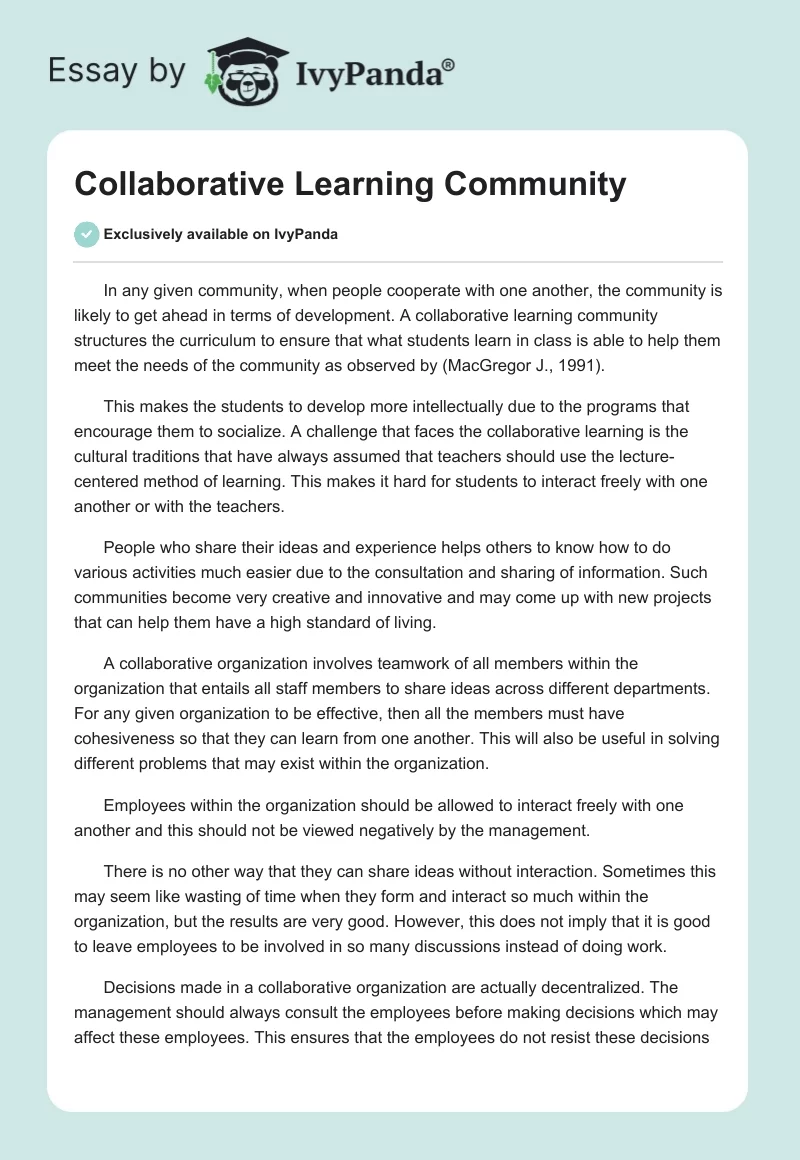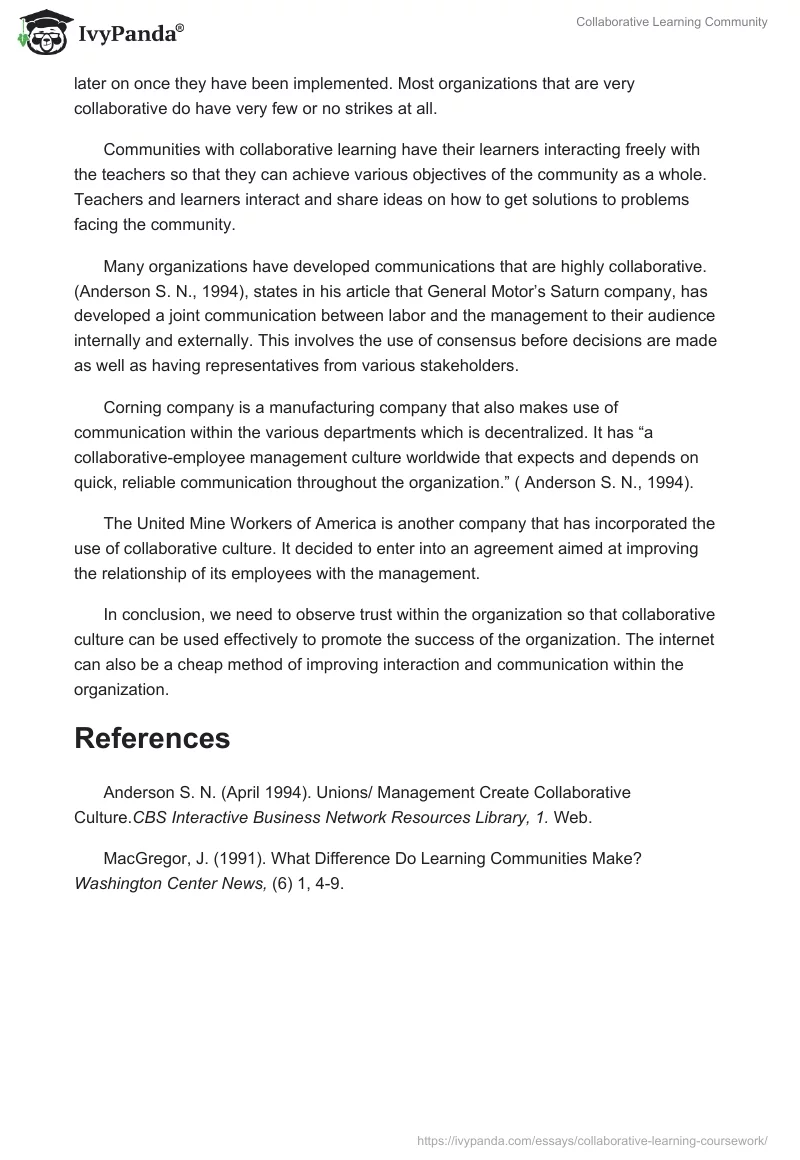In any given community, when people cooperate with one another, the community is likely to get ahead in terms of development. A collaborative learning community structures the curriculum to ensure that what students learn in class is able to help them meet the needs of the community as observed by (MacGregor J., 1991).
This makes the students to develop more intellectually due to the programs that encourage them to socialize. A challenge that faces the collaborative learning is the cultural traditions that have always assumed that teachers should use the lecture-centered method of learning. This makes it hard for students to interact freely with one another or with the teachers.
People who share their ideas and experience helps others to know how to do various activities much easier due to the consultation and sharing of information. Such communities become very creative and innovative and may come up with new projects that can help them have a high standard of living.
A collaborative organization involves teamwork of all members within the organization that entails all staff members to share ideas across different departments. For any given organization to be effective, then all the members must have cohesiveness so that they can learn from one another. This will also be useful in solving different problems that may exist within the organization.
Employees within the organization should be allowed to interact freely with one another and this should not be viewed negatively by the management.
There is no other way that they can share ideas without interaction. Sometimes this may seem like wasting of time when they form and interact so much within the organization, but the results are very good. However, this does not imply that it is good to leave employees to be involved in so many discussions instead of doing work.
Decisions made in a collaborative organization are actually decentralized. The management should always consult the employees before making decisions which may affect these employees. This ensures that the employees do not resist these decisions later on once they have been implemented. Most organizations that are very collaborative do have very few or no strikes at all.
Communities with collaborative learning have their learners interacting freely with the teachers so that they can achieve various objectives of the community as a whole. Teachers and learners interact and share ideas on how to get solutions to problems facing the community.
Many organizations have developed communications that are highly collaborative. (Anderson S. N., 1994), states in his article that General Motor’s Saturn company, has developed a joint communication between labor and the management to their audience internally and externally. This involves the use of consensus before decisions are made as well as having representatives from various stakeholders.
Corning company is a manufacturing company that also makes use of communication within the various departments which is decentralized. It has “a collaborative-employee management culture worldwide that expects and depends on quick, reliable communication throughout the organization.” ( Anderson S. N., 1994).
The United Mine Workers of America is another company that has incorporated the use of collaborative culture. It decided to enter into an agreement aimed at improving the relationship of its employees with the management.
In conclusion, we need to observe trust within the organization so that collaborative culture can be used effectively to promote the success of the organization. The internet can also be a cheap method of improving interaction and communication within the organization.
References
Anderson S. N. (April 1994). Unions/ Management Create Collaborative Culture.CBS Interactive Business Network Resources Library, 1. Web.
MacGregor, J. (1991). What Difference Do Learning Communities Make? Washington Center News, (6) 1, 4-9.


